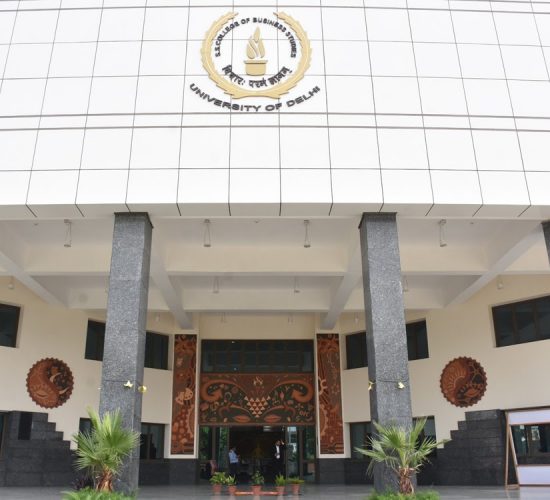Grade "A+" Accredited by NAAC with a CGPA of 3.46
The course introduces the foundations of database management systems focusing on significance of a database, relational data model, schema creation and normalization, transaction processing, indexing, and the relevant data structures (files and B+-trees).
At the end of the course, students should be able to:
Unit 1
Introduction to databases: Characteristics of database approach, data models, database system architecture, data independence and data abstraction.
Unit 2
Data modeling: Entity relationship (ER) modeling: Entity types, relationships, constraints, ER diagrams, EER model.
Unit 3
Relation data model: Relational model concepts, relational constraints, relational algebra.
Unit 4
SQL queries: SQL data definition, data types, specifying constraints, Queries for retrieval, insertion, deletion, updation, introduction to views.
Unit 5
Database design: Mapping ER/EER model to relational database, functional dependencies, Lossless decomposition, Normal forms (upto BCNF).
Unit 6
Transaction and data storage: Introduction to transaction processing: ACID properties, concurrency control; Introduction to indexing structures for files.
Create and use the following database schema to answer the given queries.
EMPLOYEE Schema
Field Type NULL KEY
DEFAULT
Eno Char(3) NO PRI NIL
Ename Varchar(50) NO NIL
Job_type Varchar(50) NO NIL
Manager Char(3) Yes FK NIL
Hire_date Date NO NIL
Dno Integer YES FK NIL
Commission Decimal(10,2) YES NIL
Salary Decimal(7,2) NO NIL
DEPARTMENT Schema
Field Type NULL KEY DEFAULT
Dno Integer No PRI NULL Dname Varchar(50) Yes NULL
Location Varchar(50) Yes New Delhi
Query List
Elmasri, R., & Navathe, S.B. (2015). Fundamentals of Database Systems. 7th edition. Pearson Education.
Date, C. J. (2004). An Introduction to database systems. 8th edition. Pearson Education.
Silberschatz, A., Korth, H. F., & Sudarshan, S. (2010). Database System Concepts. 6th edition. McGrawHill.
Use of ICT tools in conjunction with traditional class room teaching methods
Interactive sessions
Class discussions
Written tests, assignments, quizzes, presentations as announced by the instructor in the class
Entity-Relationship Modeling, Database Design, Transaction Processing, noSQL systems.
Disclaimer: Details on this page are subject to change as per University of Delhi guidelines. For latest update in this regard please refer to the University of Delhi website here.
| Cookie | Duration | Description |
|---|---|---|
| cookielawinfo-checkbox-analytics | 11 months | This cookie is set by GDPR Cookie Consent plugin. The cookie is used to store the user consent for the cookies in the category "Analytics". |
| cookielawinfo-checkbox-functional | 11 months | The cookie is set by GDPR cookie consent to record the user consent for the cookies in the category "Functional". |
| cookielawinfo-checkbox-necessary | 11 months | This cookie is set by GDPR Cookie Consent plugin. The cookies is used to store the user consent for the cookies in the category "Necessary". |
| cookielawinfo-checkbox-others | 11 months | This cookie is set by GDPR Cookie Consent plugin. The cookie is used to store the user consent for the cookies in the category "Other. |
| cookielawinfo-checkbox-performance | 11 months | This cookie is set by GDPR Cookie Consent plugin. The cookie is used to store the user consent for the cookies in the category "Performance". |
| viewed_cookie_policy | 11 months | The cookie is set by the GDPR Cookie Consent plugin and is used to store whether or not user has consented to the use of cookies. It does not store any personal data. |

